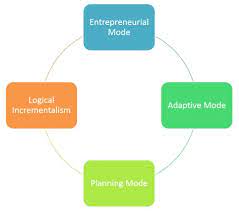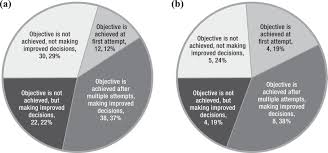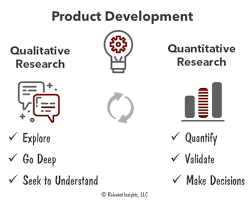Strategic Decision: Understanding the Core of Effective Planning
In the world of business and management, strategic decision-making plays a crucial role in shaping the success and direction of an organization. But what exactly is a strategic decision? Let’s delve into this concept and explore its significance.
At its core, a strategic decision is a high-level choice made by an organization’s leaders that directly impacts its long-term goals, competitive advantage, and overall direction. These decisions are often complex, multifaceted, and require careful analysis of various internal and external factors.
Unlike routine operational decisions that focus on day-to-day activities, strategic decisions are forward-thinking and have far-reaching implications for the organization. They involve evaluating market trends, assessing risks and opportunities, allocating resources effectively, and aligning the company’s strengths with its goals.
Strategic decisions encompass a wide range of areas within an organization. They can include choices related to market expansion or entry into new markets, product development or diversification, mergers or acquisitions, resource allocation, organizational restructuring, technological advancements, or even changes in leadership.
One key characteristic of strategic decision-making is that it involves considering multiple alternatives and their potential outcomes. It requires a thorough analysis of both internal factors such as financial capabilities, human resources, and operational capacities as well as external factors like market conditions, competition landscape, regulatory environment, and customer preferences.
To make effective strategic decisions, organizations often employ various tools and frameworks such as SWOT analysis (strengths, weaknesses, opportunities, threats), PESTEL analysis (political, economic, social-cultural technological environmental legal), scenario planning techniques or even consult external experts to gain valuable insights.
It’s important to note that strategic decisions are not made in isolation. They are interconnected with other aspects of an organization’s operations and require input from key stakeholders including executives, board members, department heads as well as considering the interests of employees and customers alike. Collaboration among these parties is crucial to ensure a well-rounded perspective and buy-in for the chosen strategic direction.
In an ever-changing business landscape, strategic decisions are not set in stone. They require continuous monitoring and evaluation to adapt to evolving circumstances. Flexibility and agility are key as organizations must be prepared to adjust their strategies in response to new challenges or emerging opportunities.
Ultimately, successful strategic decision-making is about finding the right balance between calculated risk-taking and prudent planning. It involves aligning the organization’s goals with its resources, capabilities, and market dynamics to gain a competitive edge.
In conclusion, strategic decisions are pivotal for organizations seeking sustainable growth and success. They involve making choices that shape the future of a company by considering various internal and external factors. By understanding the significance of strategic decision-making, organizations can navigate the complexities of their industries with clarity and purpose.
Frequently Asked Questions about Strategic Decision-making in Business
- What makes a decision strategic?
- What is a strategic decision in business?
- What is strategic decision example?
- What do you mean by strategic decision?
What makes a decision strategic?
A decision is considered strategic when it meets certain criteria that distinguish it from routine operational decisions. Here are some key factors that make a decision strategic:
- Long-term impact: Strategic decisions have a significant and lasting impact on an organization’s direction, goals, and overall success. They are focused on achieving long-term objectives rather than addressing immediate or short-term concerns.
- Scope and complexity: Strategic decisions are typically complex in nature, involving multiple variables, stakeholders, and potential outcomes. They require a comprehensive analysis of various internal and external factors to understand the broader implications of the decision.
- Cross-functional implications: Strategic decisions often cut across different functions or departments within an organization. They require collaboration and coordination among various teams to ensure alignment and effective implementation.
- Alignment with organizational goals: Strategic decisions are closely tied to an organization’s mission, vision, and strategic objectives. They aim to advance the organization’s competitive position, market presence, profitability, or other overarching goals.
- Consideration of external factors: Strategic decisions take into account external factors such as market trends, customer preferences, competitive landscape, regulatory environment, technological advancements, and economic conditions. Understanding these external dynamics helps organizations make informed choices that leverage opportunities or mitigate risks.
- Evaluation of alternatives: Strategic decisions involve considering multiple alternatives or courses of action before selecting the most suitable one. This requires analyzing different scenarios, conducting feasibility studies, assessing risks and rewards, and evaluating potential outcomes.
- Senior leadership involvement: Strategic decisions are typically made by senior leaders or executives who have a holistic view of the organization’s operations and strategic priorities. Their expertise and experience help guide the decision-making process by considering both short-term considerations and long-term implications.
- Flexibility for adaptation: While strategic decisions aim for long-term impact, they should also allow for flexibility in adapting to changing circumstances or unforeseen challenges. Regular monitoring and evaluation help organizations adjust their strategies as needed to remain competitive and responsive to market dynamics.
It’s important to note that not all decisions made within an organization are strategic. Routine operational decisions, such as day-to-day tasks or minor adjustments, are necessary for ongoing operations but may not have the same level of impact or complexity as strategic decisions.
In summary, a decision is considered strategic when it has a long-term impact, involves complex analysis and coordination, aligns with organizational goals, considers external factors, evaluates alternatives, involves senior leadership, and allows for adaptation. These characteristics distinguish strategic decisions from routine operational choices and highlight their significance in shaping an organization’s future.
What is a strategic decision in business?
A strategic decision in business refers to a high-level choice made by the leaders or executives of an organization that directly impacts its long-term goals, competitive advantage, and overall direction. These decisions are typically complex and involve considering various internal and external factors.
Strategic decisions differ from routine operational decisions as they focus on shaping the future of the organization rather than day-to-day activities. They often involve evaluating market trends, assessing risks and opportunities, allocating resources effectively, and aligning the company’s strengths with its goals.
Examples of strategic decisions in business can include:
- Market Expansion: Deciding to enter new markets or expand operations into different regions or countries to increase market share and reach a larger customer base.
- Product Development or Diversification: Choosing to develop new products or diversify the existing product line to cater to changing customer preferences or tap into new market segments.
- Mergers and Acquisitions: Evaluating opportunities for merging with or acquiring other companies as a means of expanding capabilities, entering new markets, or gaining competitive advantages.
- Resource Allocation: Allocating financial resources, human capital, and other assets strategically to ensure optimal utilization and support organizational objectives.
- Organizational Restructuring: Making decisions related to restructuring the organization’s hierarchy, departments, or processes to enhance efficiency, streamline operations, or adapt to changing market conditions.
- Technological Advancements: Assessing investments in new technologies or digital transformation strategies that can enhance productivity, improve customer experience, or drive innovation within the organization.
- Changes in Leadership: Making decisions regarding leadership transitions or succession planning to ensure continuity and effective management of the organization.
Strategic decisions require careful analysis of internal capabilities such as financial resources, human capital, and operational capacities along with external factors like market conditions, competition landscape, regulatory environment, and customer preferences. These decisions are critical for an organization’s long-term success as they set the course for future growth, profitability, and sustainability.
What is strategic decision example?
One example of a strategic decision is the choice to enter a new market. Let’s say a company primarily operates in the domestic market and wants to expand its reach internationally. The decision to enter a new market requires careful consideration of various factors such as market research, competitive analysis, regulatory requirements, cultural differences, and potential risks and opportunities.
The company’s leaders would need to evaluate the feasibility and profitability of entering the new market. They would assess factors like customer demand, purchasing power, competition, and the company’s ability to adapt its products or services to meet the needs of the target market.
Once the decision is made to enter the new market, it would involve allocating resources for market research, product development or customization, marketing campaigns, distribution networks, and establishing local partnerships or subsidiaries if necessary.
This strategic decision could have long-term implications for the organization’s growth and profitability. It requires careful planning and execution to ensure a successful entry into the new market while mitigating potential risks associated with international expansion.
Other examples of strategic decisions include diversifying product offerings, acquiring or merging with another company, implementing major organizational restructuring or change initiatives, adopting new technologies that enhance operational efficiency or competitive advantage, and choosing whether to pursue cost leadership or differentiation strategies in the marketplace.
In essence, strategic decisions are those that significantly impact an organization’s trajectory and require thoughtful analysis of multiple factors before implementation.
What do you mean by strategic decision?
A strategic decision refers to a high-level choice made by an organization’s leaders that directly impacts its long-term goals, competitive advantage, and overall direction. It is a decision that involves considering multiple alternatives and their potential outcomes, as well as analyzing various internal and external factors. Strategic decisions are forward-thinking and have far-reaching implications for the organization, often involving market trends, resource allocation, organizational restructuring, technological advancements, or changes in leadership. They require careful analysis, collaboration among key stakeholders, and continuous monitoring and evaluation to adapt to evolving circumstances. The goal of strategic decision-making is to align the organization’s goals with its resources and market dynamics in order to achieve sustainable growth and success.




